#15 in Vietnam
Mì Quảng: Basic Information
Pronunciation
Alternative Name(s)
Dish Type
Course
Mealtime
Popular Mì Quảng Variations
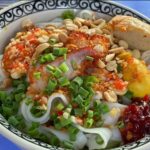
Mì Quảng Trộn (no broth)
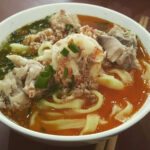
Mì Quảng Tôm Thịt

Mì Quảng Ếch
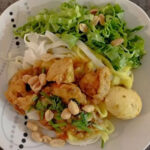
Mì Quảng Gà
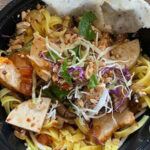
Mì Quảng Chay

Mì Quảng Bò
Mì Quảng: Ingredients and Preparation
Main Ingredients
Main Cooking Method
Preparation Process
Mì Quảng: A Deep Dive
Cultural Significance
Taste
Texture
Aroma
Color
Serving Style
Serving Temperature
Accompaniment
Occasions
Seasons
Special Diets
Calories
Popularity
Popular Similar Dishes
Popular Dining Area
Mì quảng, or mỳ quảng, is a national Vietnamese noodle delicacy of the Quang Nam Province, hence the word “quảng” in the dish’s name.
The street food specialty is a favorite in Vietnam often found at many local restaurants and street vendors in the country.
Overall, this traditional dish from Quảng Nam Province is a combination of broth with rice noodles, meat (shrimp or pork), and herbs.
The rice noodles used for mì quảng are a wide variety with a signature yellow color thanks to the egg yolk, while the broth possesses a strong flavor.
Ideally, people will pour in the broth so that it barely covers the noodles and vegetables. Aside from shrimp and pork, even chicken, beef, or fish is fit for making mì quảng.
For serving, a mì quảng bowl is loaded with herbs and a sprinkle of peanuts for serving.
However, the unique feature is in its accompaniments, often a type of sesame rice cracker, for an extra crunch.
Furthermore, there is even a brothless version of mì quảng, letting you enjoy the ingredients like a mixed salad.
In addition, I suggest having a peek through the version of mì quảng along with the ingredients and how this noodle specialty is created.
Also, there are interesting good and bad features of eating mì quảng. Later on, make sure to go through some of the common questions people often have about mì quảng and dishes that are similar to it.
Key Points
Mì Quảng Images
What Are the Variants of Mì Quảng?
Mì quảng has many fillings, which result in the dish having many variations. For that, allow me to introduce you to 12 variants of this noodle dish:
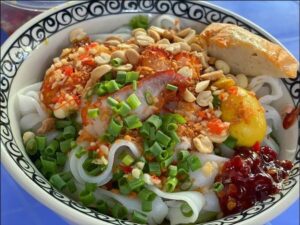
Mì Quảng Trộn (no broth)
A brothless version featuring all the elements of mì quảng
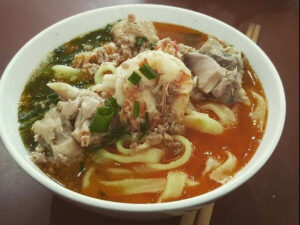
Mì Quảng Tôm Thịt
A version that focuses on shrimps and meat
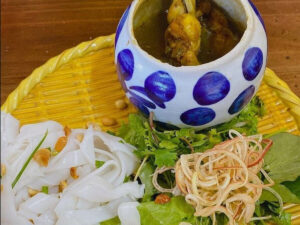
Mì Quảng Ếch
A mì quảng adaptation but frog meat as the main source of protein
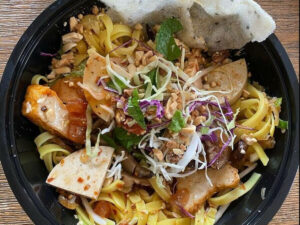
Mì Quảng Chay
A vegetarian version of mì quảng
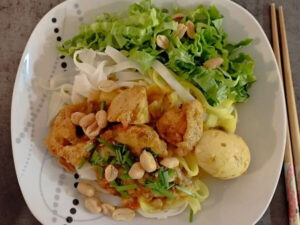
Mì Quảng Gà
Mì quảng but with chicken meat as the main attention
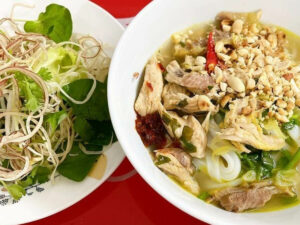
Mì Quảng Cá Lóc
Has a bold broth with a sweet profile from the snakehead fish
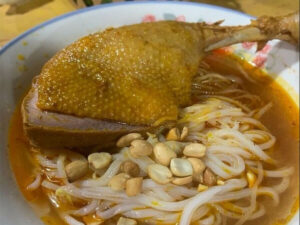
Mì Quảng Vịt
Has a darker broth and is a specialty of Phan Thiet
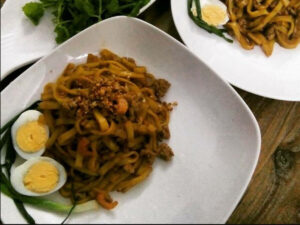
Mì Quảng Xào
A stir-fried variation of mì quảng

Mì Quảng Sườn Non
A mì quảng adaptation with tender pork spare ribs and other toppings
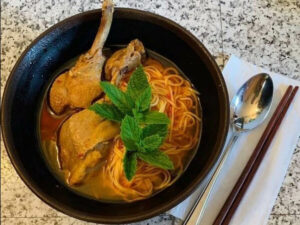
Mì Quảng Đà Lạt
A version of mì quảng from Da Lat and has a special taste from the added Vietnamese fermented shrimp paste
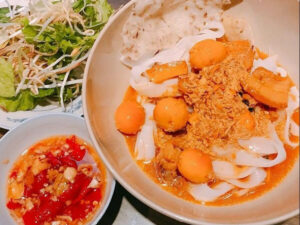
Mì Quảng Phú Chiêm
Features a special broth that is made from rice field crab

Mì Quảng Bò
Use beef as the main highlight of the dish
Don’t just stop at knowing only the many forms of mì quảng as I suggest diving deeper into the dish by learning about the elements that formulate this specialty.
What Ingredients Are Used to Make Mì Quảng?
To materialize a bowl of mì quảng, it takes many elements to nail the right flavors and texture of this noodle dish:
- Noodles: Flat rice noodles infused with turmeric for a yellow color.
- Proteins: The dish typically includes shrimp, pork, and sometimes beef, chicken, or fish.
- Broth ingredients: The broth is made from pork bones or chicken bones and seasoned with fish sauce, black pepper, shallots, garlic, sugar, and salt.
- Additional flavorings and toppings: Crushed roasted peanuts, toasted sesame rice crackers, sliced red chili peppers, and lime wedges are common additions.
- Garnishes: The dish is often garnished with fried shallots and sometimes fried garlic.
- Spices and seasonings for the broth: Turmeric gives the broth its yellow hue, and sometimes annatto seeds are used for color.
With all the ingredients in the palm of your hand, it’s easy to go through the process of producing your very own mỳ quảng bowl.
What Ingredients Are Used to Make Mì Quảng?
To make mì quảng, locals often prepare all the necessary ingredients before initiating the cooking process:
Step 1: Marinating the Meat
Begin by marinating shrimp and pork with garlic, shallots, fish sauce, and pepper. Allow the meat to soak in the flavors for about 30 minutes.
Step 2: Cooking the Meat
In a pan, stir-fry the marinated shrimp and pork until they’re cooked through.
Step 3: Broth Preparation
In a large pot, combine pork bones, dried shrimp, and seasonings. Bring to a simmer to extract the flavors. Add turmeric to the broth to achieve the signature yellow hue. This broth is kept more concentrated than typical Vietnamese noodle soups.
Step 4: Noodle Preparation
Boil the rice noodles made specifically for mì quảng. Once cooked, drain the noodles thoroughly.
Step 5: Assembly
Place the cooked noodles at the bottom of a bowl. Layer the cooked meat over the noodles and pour the concentrated broth over the top, just enough to soak the noodles. Garnish with crushed peanuts, toasted sesame rice crackers, and fresh herbs.
Don’t leave just yet, as you should have a more thorough look at mì quảng through some of these advantages and disadvantages of eating this noodle specialty.
Pros and Cons of Eating Mì Quảng
Savoring mì quảng is quite an experience, but you should be aware of the benefits and drawbacks of this noodle dish ahead of consumption:
Pros
Cons
Knowing about mì quảng is one thing, as it’s also crucial to expand your understanding by digging into some of the common inquiries that revolve around this dish.



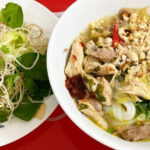

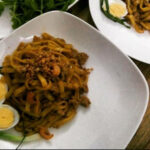
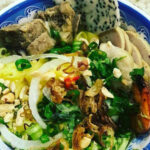
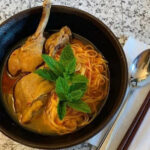
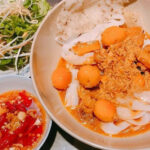
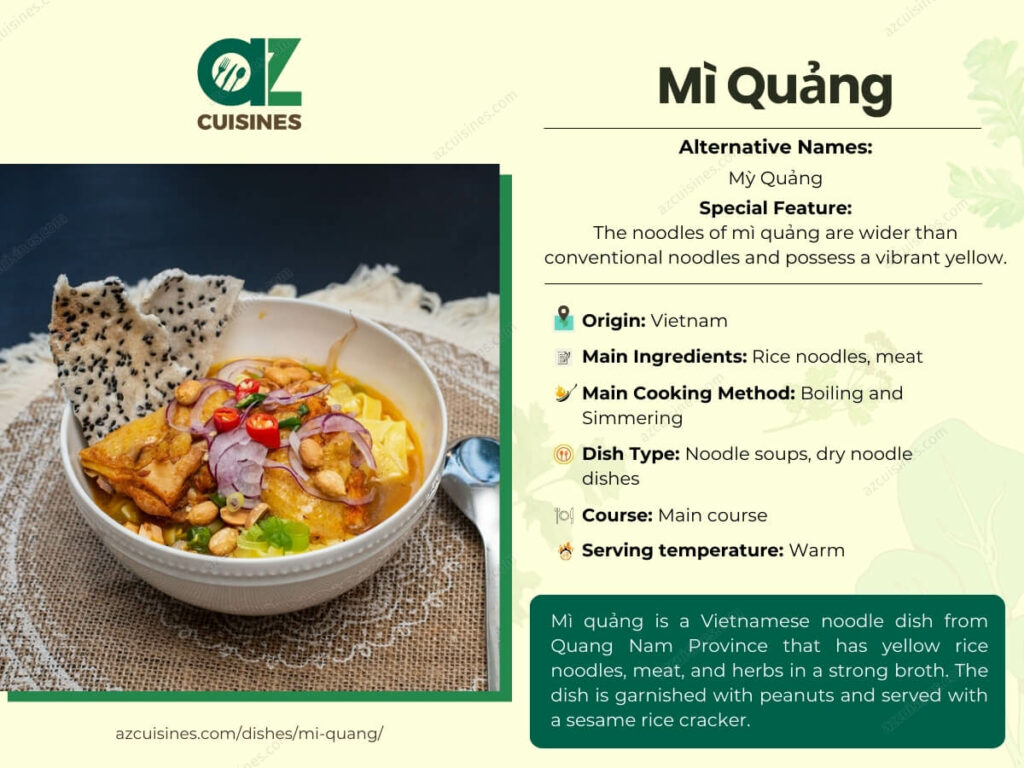
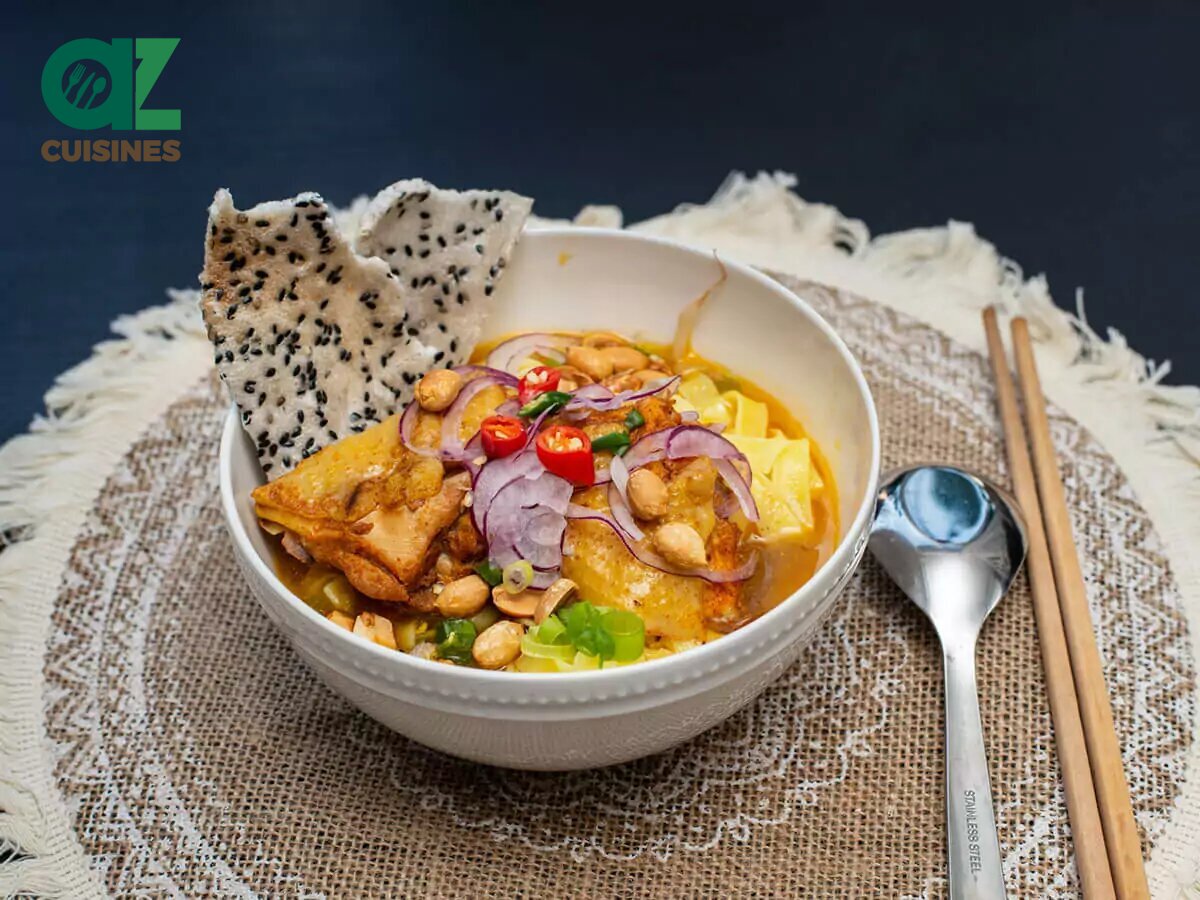
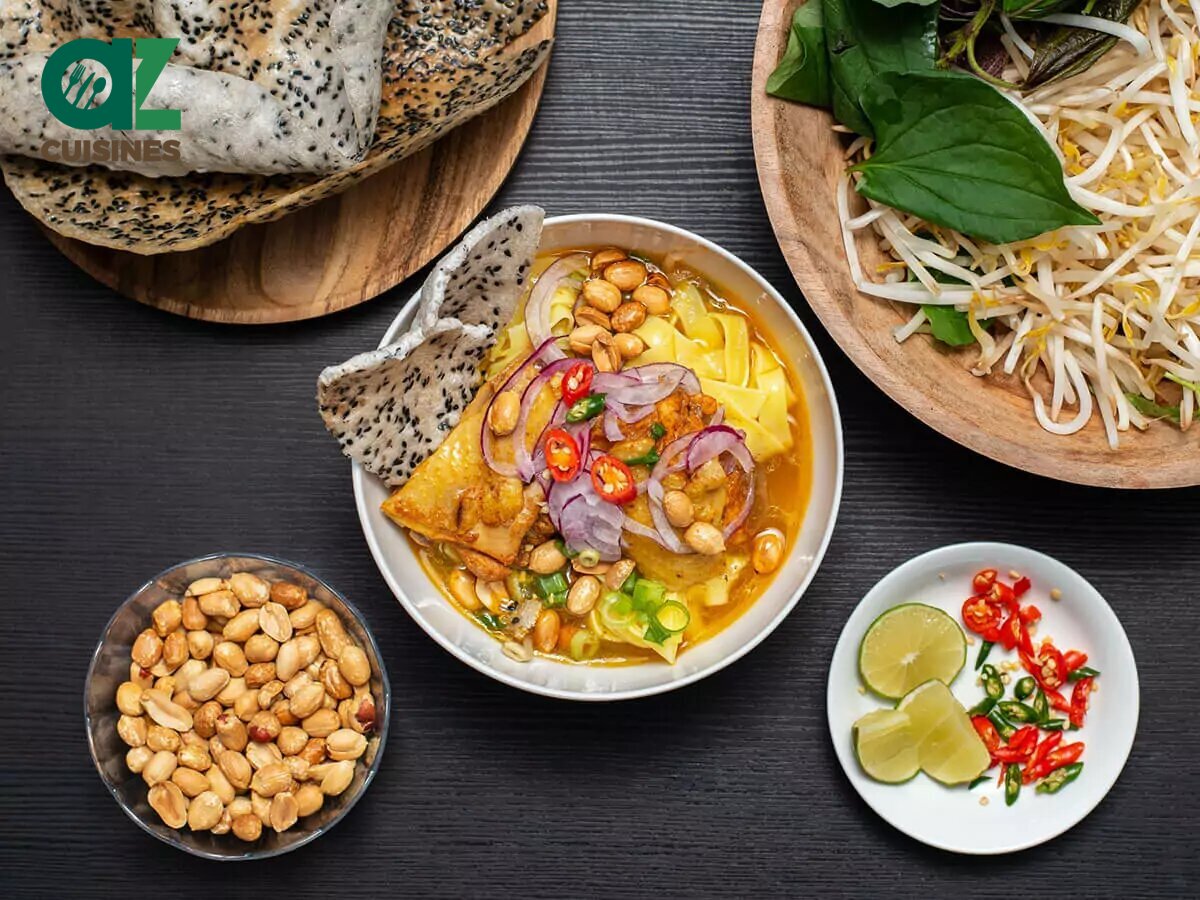

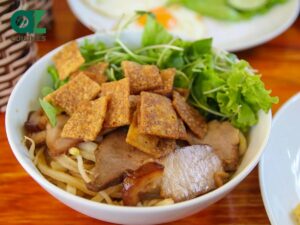
Truc Tran (Kris)
Senior Food Editor
Expertise
Home Cooking, Meal Planning, Recipe Development, Baking and Pastry, Food Editor, Cooking-video Maker, Vietnamese Food Evaluation Expert
Education
Truc Tran (Kris), an experienced food writer and editor, is great at exploring and describing global cuisines, from simple street food to fancy dining. In her writing, she skillfully mixes different flavors, cooking methods, and culinary traditions, showing the unique character of various cultures through their food and drinks. On azcuisines.com, Kris highlights her knowledge, especially in Asian cuisine and worldwide traditional dishes.